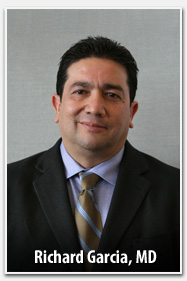
This article is the second installment in a series of discussions on ICD-10. Written by a member of our Physician Consultant team, this article series is intended for a physician audience. The opinions expressed in this article are solely the opinions of the author, and unless stated otherwise, do not represent MEDITECH’s position on these issues.
ICD-10: It’s About Intelligent Clinical Documentation
I am often asked if I think that ICD-10 will be delayed again. My answer is always “it doesn’t really matter.” ICD-10 is not about the codes, it’s about providing more granular and relevant clinical documentation that will ultimately improve patient care.
Better documentation with ICD-10 will also impact physician quality scores, and more accurately reflect patient severity and acuity. This is why I tell my physicians in my ED group that the abbreviation “ICD” really stands for Intelligent Clinical Documentation. If ICD-10 is really about clinical documentation improvement, the question is how do we do this well?
Clinical Documentation Improvement
When organizations speak of clinical documentation improvement (CDI) or clinical documentation support (CDS), most are referring to tools such as computer-assisted coding (CAC) that uses natural language processing (NLP) engines, or the use of clinical documentation specialists. Interacting with physicians is usually done only by way of education efforts, or in the form of the often-dreaded documentation query.
If organizations wish to engage physicians as true partners in clinical documentation improvement, processes must be created that respect the physician's time and workflow. Education efforts must be focused, and strategies need to be developed that allow physicians to capture documentation on the front end of the initial patient encounter. Such strategies will be much better received than the current process of querying the physician later during the hospitalization, or even worse, after patient discharge. Physician-driven processes available at the front-end of the patient’s care episode will render a more efficient workflow than the usual back-end processes of CAC tools and CDI specialists.
The Story of Three Hikers
Consider this story of three friends who went on a hike. Each took a separate trail and agreed to meet later that afternoon. The first hiker was five hours into his hike when a CDS park ranger stopped him and told him that he needed to go down a separate trail to get to where he was going. “When you are hiking north of a stream you must make a left at the next trail,” he said.
The hiker thought to himself that this was some random information, but headed back as he was told and the detour ended up adding three additional hours to his hike. The whole time the hiker was thinking to himself, “why didn't someone tell me the correct trail to take at the beginning of my journey?"
The second hiker did not return at all that afternoon. That evening the search and rescue team was called and the hiker was still not found. The search dogs were employed, and then on the second day the CAC/NLP choppers were deployed with special night-vision capabilities and heat sensor technology. The hiker was eventually found, albeit somewhat incomplete and a little battered. The second hiker made the news with a parallel story about the amazing technology that found him.
The third hiker returned from his journey in 2 hours without incident. The difference? He told the others that he was given a map at the start of his hike, and therefore had clear directions for the trails before he even began.
In this analogy, the hiker is the elusive physician documentation. The map given to the third hiker at the beginning of his trek was front-end CDI—nothing fancy but it works and is most respectful of the physician’s time.
Bidirectional CDI Model
Adding front-end, physician-driven data capture to traditional back-end strategies is a model that should be adopted by the health care industry. Physicians should be engaged with strategies that are designed to respect their time and workflow, thus ensuring their buy-in at the very beginning. Such "bidirectional" strategies are also respectful of the health information management professional's workflow. By having complete documentation on initial review, especially if this information is captured in a specific part of the medical record, HIM staff will become much more efficient. Rather than spending time chasing physicians for incomplete documentation, these professionals can spend more time coding charts and maintaining a healthy revenue cycle for their hospitals.
The transition towards ICD-10 will be a difficult one to manage. Organizations that understand how to engage in true partnerships with their physicians will be the most successful—and the bidirectional CDI/CDS model I outlined here is one strategy they can take.
Dr. Richard Garcia MD, MPP, MHA AHIMA Approved ICD-10 CM/PCS Trainer
The eight remaining articles in this series will be dedicated to providing a perspective on all of these issues regarding the ICD-10 transition, including a discussion on what MEDITECH is doing to support this issue. It is my intention to provide you with a physician’s perspective and to engage in an open and supportive dialogue moving forward.
Dr. Rich Garcia MD, MPP, MHA
Richard Garcia, MD is a practicing emergency physician and medical director at Beverly Hospital in Montebello, California. Dr. Garcia is an AHIMA Approved ICD-10 CM/PCS Trainer. He received his MD degree from Harvard, his Master’s in Public Policy from Harvard’s Kennedy School of Government, and his Master’s in Health Administration from USC. Dr. Garcia is a physician consultant for MEDITECH, a physician advocate for Nuance, and a physician advisor for ImplementHIT. Dr. Garcia has developed an expertise around physician documentation and is CEO of Power ICD and Co-Developer of ICD-Scribe.